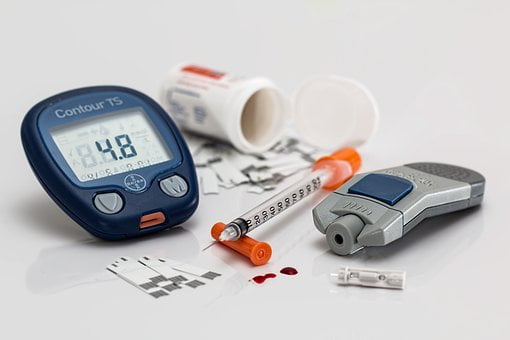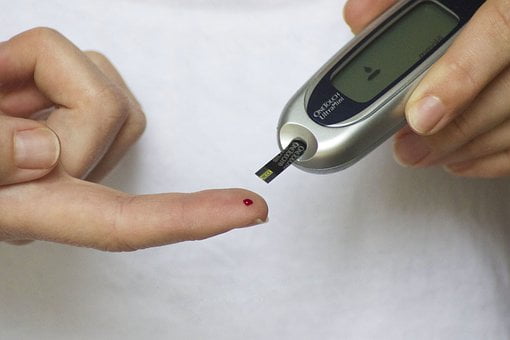What is the best diet for a diabetic person? When you’re living with diabetes, knowing what to eat on a daily basis can seem like a daunting task. But fear not—there are plenty of options available to help you navigate the grocery store and create healthy meals that don’t only taste delicious, but also promote a healthy lifestyle.
What should you focus on when it comes to eating right? Generally speaking, you’ll want to focus on foods that are full of fiber, low in sugar and packed with nutrients. Think fruits, vegetables, whole grains and lean proteins. You’ll also want to limit your intake of processed foods and foods that are high in saturated fat or cholesterol, such as red meat and full-fat dairy products.
On the flip side, there are certain things that all diabetic people should avoid. These include sugary drinks like soda or energy drinks, fried food and trans fats in processed snacks like chips or cookies. All of these foods can make managing your blood sugar levels more difficult than necessary.
If you’re still unsure about what foods will aid your journey towards good health, consider booking an appointment with a dietitian who specializes in diabetes care. He or she can help create an individualized plan that works for your specific needs!
Carbohydrate Counting for a Diabetic Diet
For a diabetic, eating the right foods can make a world of difference in successfully managing your diabetes. An effective diet for controlling diabetes is one that focuses on balancing carbohydrates, proteins, and fats. One popular and highly successful strategy for managing diabetes is carbohydrate counting.
Carbohydrate counting involves tracking the amount of carbohydrates you eat throughout the day in order to keep your blood glucose levels from fluctuating too much. To do this, it helps to know how many carbohydrates are found in common food items. Some great sources of carbohydrates are:
- Whole grains such as oatmeal and brown rice
- Starchy vegetables such as potatoes and corn
- Fruits such as apples and bananas
- Beans such as black beans and lentils
- Dairy products such as milk and yogurt
To keep your blood glucose levels under control, it’s important to be mindful of portion sizes when eating these types of foods. Choose small portions (1/2 cup to 1 cup per meal), spread over several meals throughout the day. By monitoring your carbohydrate intake, you’ll have more control over your blood sugar levels — which can go a long way in helping manage your diabetes.
Recommended Proteins for a Diabetic Diet
Eating enough protein is key to a successful diabetic diet. When planning your meals, aim for the adequate amount of protein recommended by the American Diabetes Association, which is about 20 – 30 grams per meal. The types of proteins you choose are also important when you have diabetes.
Here’s why: Proteins are made up of amino acids, and some amino acids can raise your blood sugar levels more than others. So, in general, try to opt for leaner forms of proteins like lean beef and chicken breast instead of fattier cuts. If you’re vegetarian or vegan, plant-based sources of protein like legumes, nuts and seeds are great options too.
Stick to Low Glycemic Foods
In addition to eating lean proteins, it’s important that you watch what type of carbohydrates your body is taking in too. That means sticking to foods with a low glycemic index (GI) that won’t spike your blood sugar levels. Great low GI options include legumes, quinoa and steel cut oats—these can all be taken in moderation as part of your regular meal plan!
Fats, Fiber and Vitamins to Include in the Diabetic Diet
It’s important to make sure that you get the right balance of fats, fiber and vitamins when it comes to your diet if you’re diabetic. Eating the wrong type of food can increase your blood sugar levels and risk for other complications related to diabetes, so it’s crucial that you pay attention to what you eat.
Let’s break it down:
Fats
Fats are important for a healthy diet, but you need to be careful about what type of fat you include in your meals. Choose unsaturated fats like those found in olive oil, avocados and nuts rather than saturated fats like butter and red meat. This will help keep your cholesterol levels low and reduce your risk for heart disease.
Fiber
Fiber is an important part of any healthy diet, and diabetics are no exception! You should aim to get at least 25 grams of fiber per day and include sources such as whole grains, legumes, fruits and vegetables in your meals. Fiber helps slow down digestion which can help keep blood sugar levels steady.
Vitamins
Last but not least, make sure you’re getting enough vitamins in your diet too! Diabetics have an increased risk for certain vitamin deficiencies so it’s important to get enough vitamins A, B6, B12 and D either through their food or supplements. If you’re unsure about what kind of vitamins you should be taking (and how much), talk with a nutritionist or doctor who can help set up a personalized plan for you.
What foods to avoid with diabetes
As a diabetic person, there are certain foods you should avoid in order to maintain healthy blood sugar levels. Foods that are high in calories, fat, and sugar, such as pastries, candy, and processed snack foods should be avoided. Other foods to steer clear of include:
Refined Grains
Refined grains like white bread and white pasta can cause blood sugar levels to spike quickly due to their high glycemic index. Instead of refined grains, opt for whole wheat or whole-grain products.
Trans Fats
Trans fats are found in processed foods like store-bought cookies and chips. It’s important to check nutrition labels for trans-fat content before buying those items—even if something has 0g of trans fat listed on the label, it may contain up to 0.5g per serving which can still be bad for your health.
Sodium
High sodium intake can lead to high blood pressure and fluid retention, both of which can make it harder to manage diabetes. Therefore, staying away from salt as well as processed items with added preservatives is wise.
By avoiding these types of food and focusing on fresh vegetables, fruits, lean proteins and good fats you’ll have a much easier time managing your diabetes!

Making Meals That Are Both Healthy and Delicious
It is possible to make meals that are both healthy and delicious. With a few simple swaps and modifications, you can make meals that suit your diabetes needs but won’t leave you feeling deprived or unsatisfied.
Swapping Out Unhealthy Food
The key here is to swap out unhealthy ingredients for healthier alternatives. For example, instead of using white flour, opt for whole grain or almond flour. You can also cut out sugary syrups by using natural sweeteners like honey or dates.
Looking for Diabetic-Friendly Recipes
Cooking healthy recipes doesn’t have to be intimidating! Dedicate some time to researching diabetic-friendly recipes, so that you can have a variety of meal ideas on hand. Check out online blogs or cookbooks dedicated specifically to diabetic meals, so you can be sure the recipes will be made with diabetes in mind.
You can also modify existing recipes by swapping out unhealthy ingredients as mentioned above. That way, while you get a good idea of how the recipe should turn out, you still have the freedom to make changes if needed!
Testing your blood glucose levels before and after meals is also another great way to monitor your diet and ensure it’s working for you and your diabetes needs.
Tips for Sticking to the Best Diet for a Diabetic Person
Eating healthily is an important part of managing your diabetes, and it may seem like a daunting task at first. However, there are some easy tips you can follow to stick to the best diet for a diabetic person.
Plan Your Meals
Planning your meals in advance is essential in order to ensure that you’re eating the right foods and have the right portion sizes. Take time each week to plan out what you’re going to eat and make grocery lists so that you can have all the right foods on hand when it’s time to cook.
Read Food Labels
Take a look at food labels when grocery shopping, paying close attention to things like fat and calorie content as well as added sugars. As a general rule, try to select foods that are low in these areas as well as high in protein and fiber.
Think Carbs
Carbohydrates play an important role in managing blood sugar levels, so make sure that you include quality carbohydrates such as whole grains and legumes at every meal. Keep portion sizes of carbohydrates small enough that they won’t spike your blood sugar levels too quickly or dramatically.
Don’t Skip Meals
Skipping meals can cause your blood sugar levels to go up unexpectedly due to lack of food. Make sure you plan for regular snacks if needed — just ensure that they’re healthy snacks such as vegetables or fruits rather than junk food or sugary treats.
By following these tips, you should be able to stick with the best diet for a diabetic person—all while feeling satisfied!
Conclusion
Eating right is an important part of managing diabetes, and it can help you control your blood sugar levels. But it’s not just about limiting certain foods—it’s also about eating the right foods in the right amounts. Eating a variety of nutrient-dense foods, such as whole grains, lean proteins, fruits, and vegetables can help you stay healthy, and ensure that you are getting the right mix of nutrients to support your diabetes.
Additionally, developing healthy habits and making lifestyle changes, such as limiting processed foods, being physically active, and managing stress can all help to improve your overall health and manage your diabetes. With some dedication and planning, you can make the right diet and lifestyle changes to help you reach your health goals.
Related Posts
This article is reviewed by Russel, before publishing. If you have any doubt, you can contact us or consult with your nearby doctor. Remember, in medical matters, there is no same advice, cure, and medicine for all.

